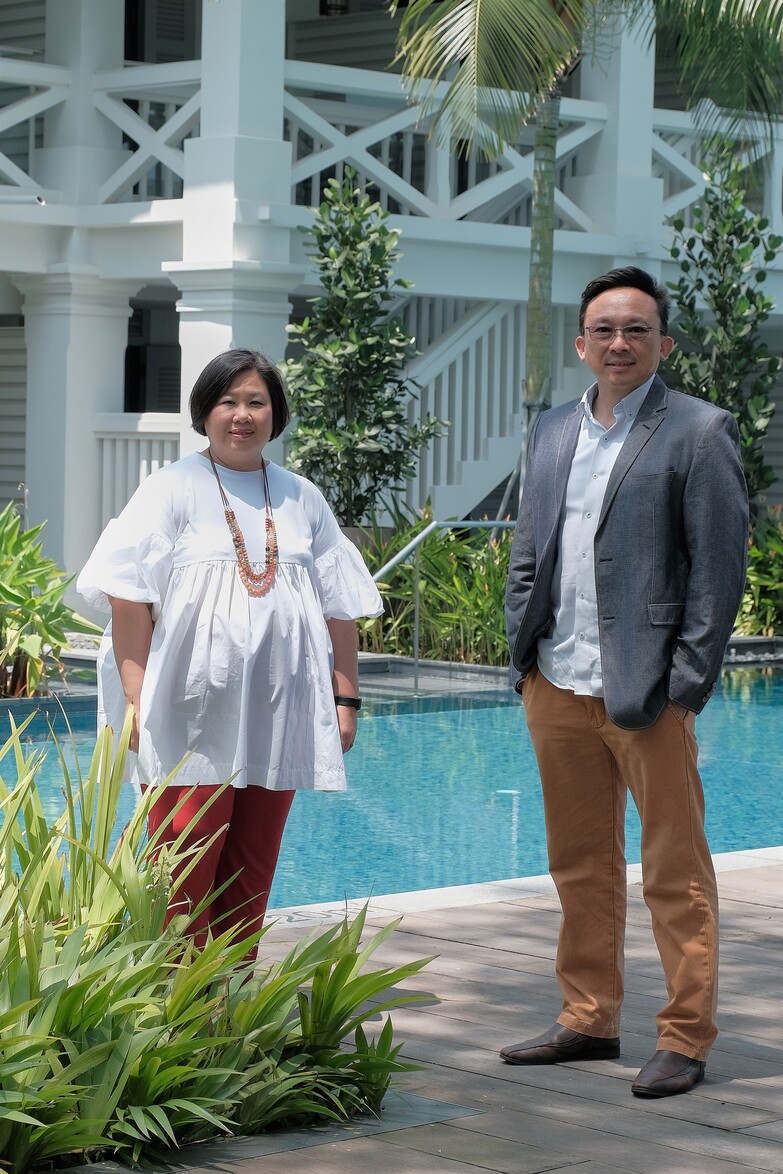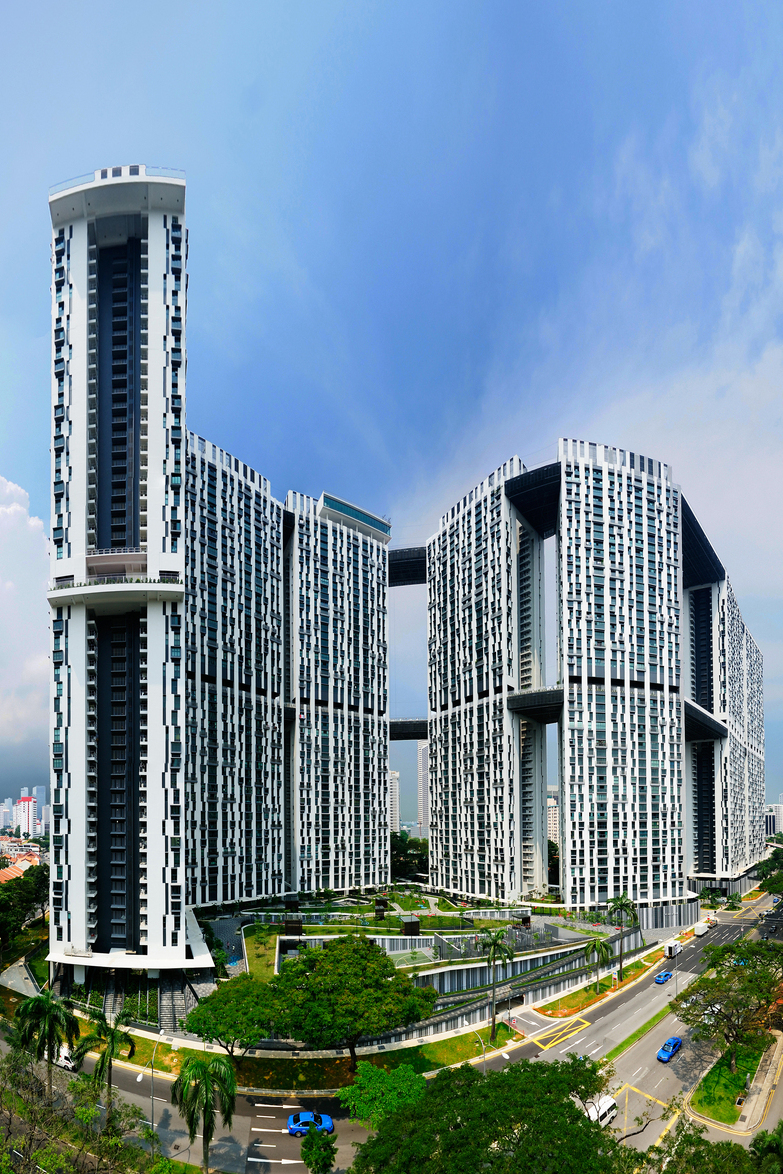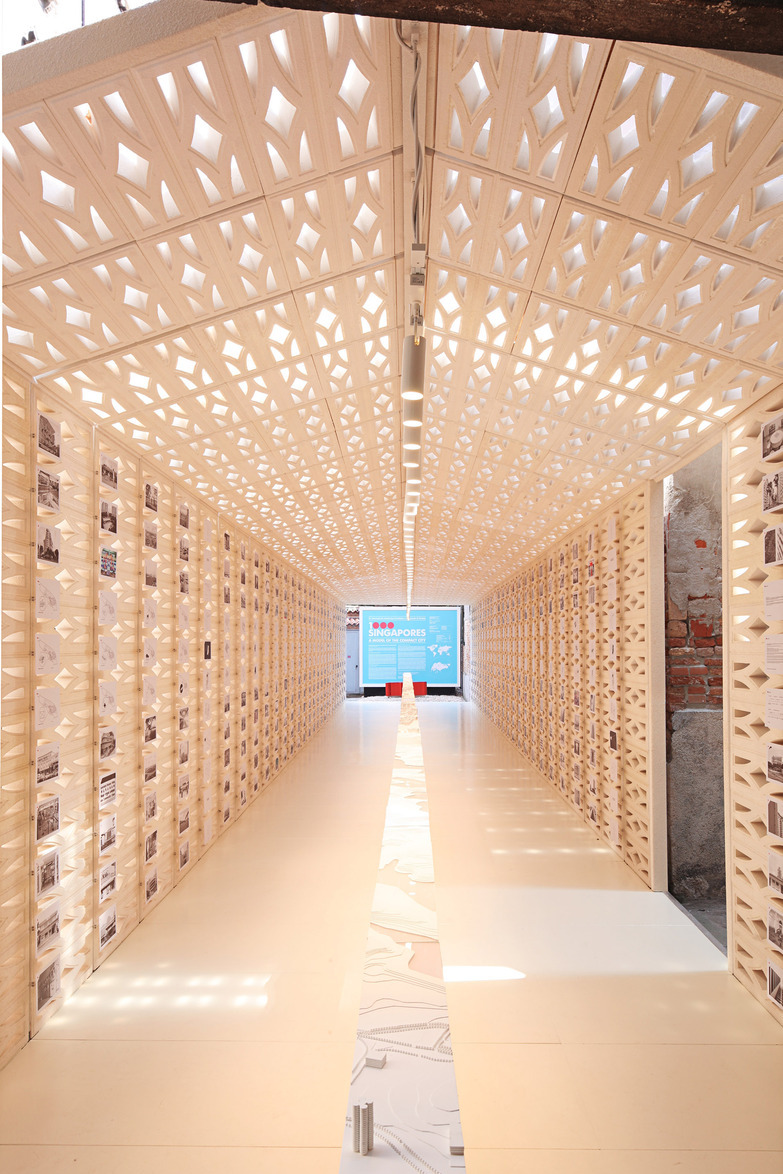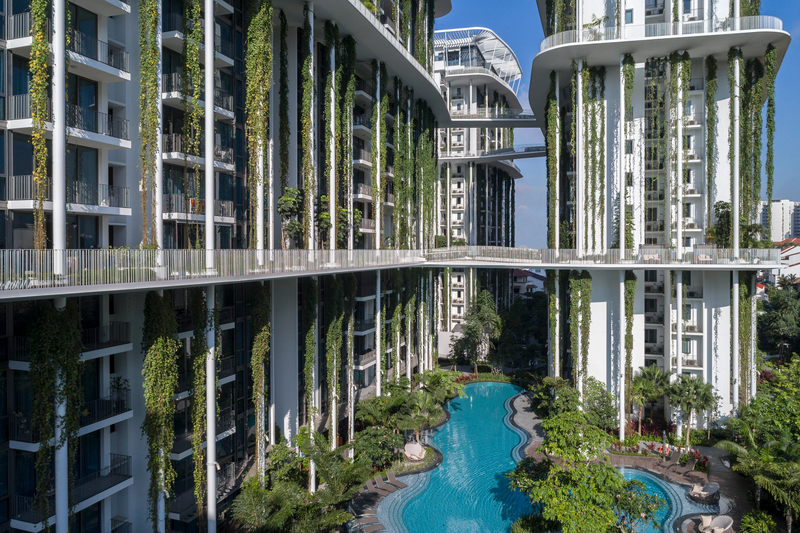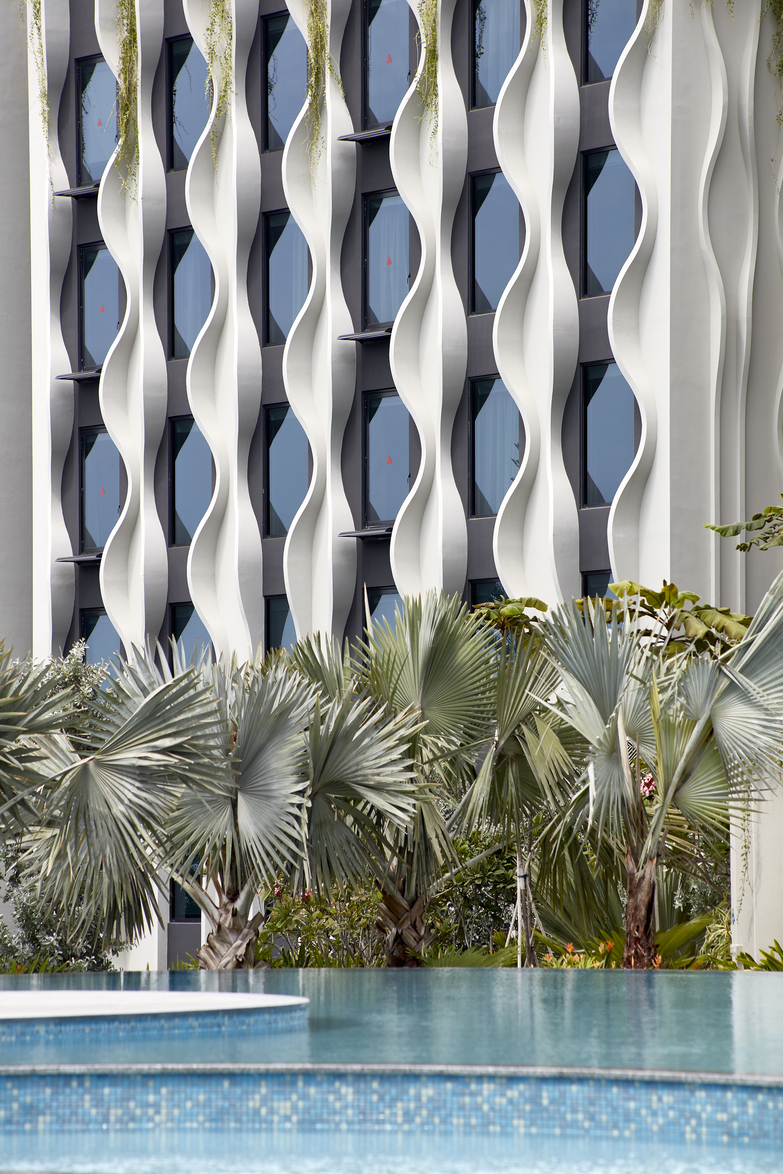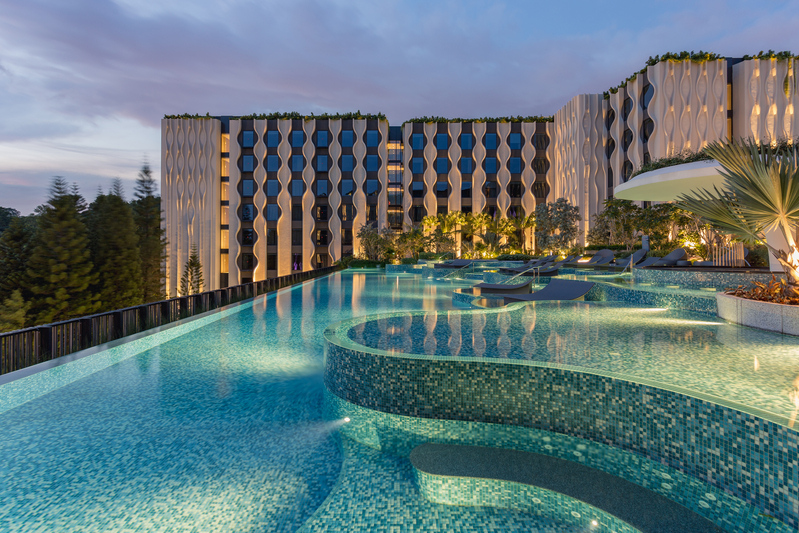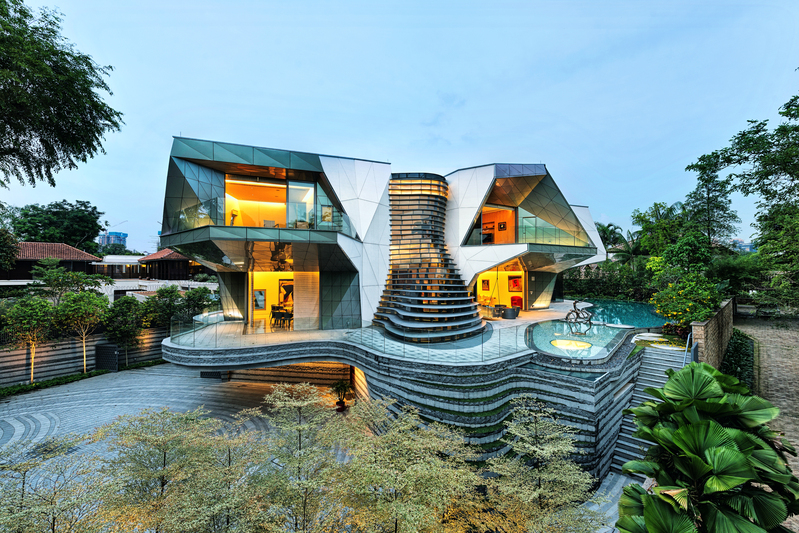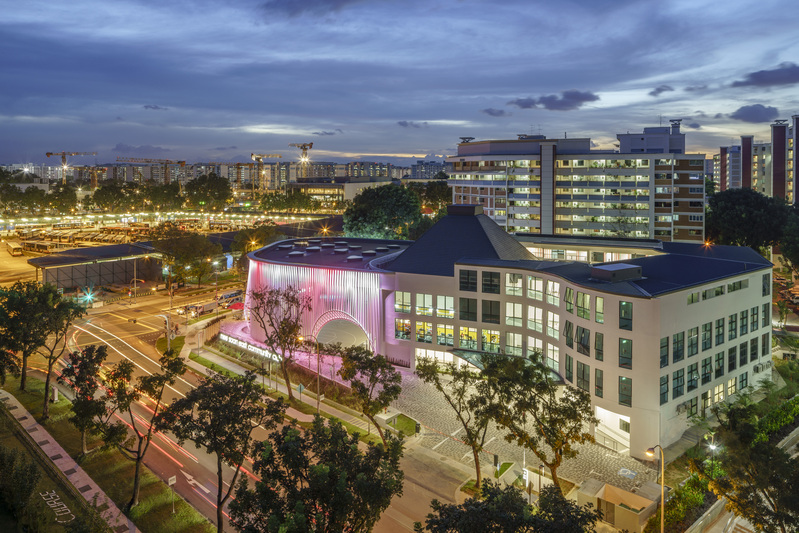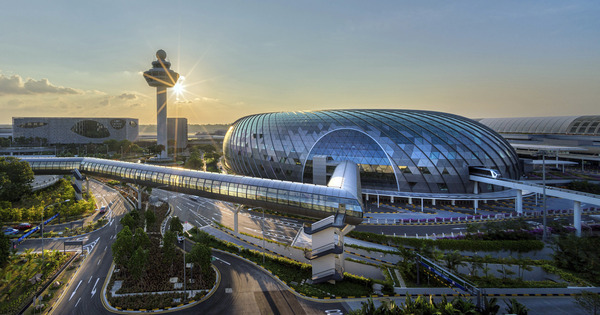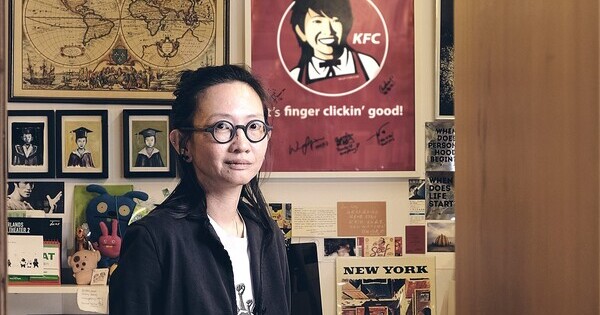* DESIGNER OF
THE YEAR 2020
Ar. Khoo Peng Beng and Ar. Belinda Huang
Directors
ARC Studio Architecture + Urbanism Pte Ltd
From rooftop gardens to community decks in the air, life in Singapore has gone from “high-rise” to “sky-rise” over the last two decades. As the city’s buildings climb ever higher, they have also been imaginatively designed to reclaim the skies and transform high-density living into a highly attractive and liveable proposition.
A pioneering proponent of this movement has been the husband-and-wife team of Ar. Khoo Peng Beng and Ar. Belinda Huang. Just four years after founding ARC Studio in 1999, the young design team, together with RSP Architects Planners & Engineers (Pte) Ltd, beat over 200 submissions from around the world to realise Singapore’s first 50-storey public housing development. Pinnacle@Duxton demonstrated how “superdensity” developments can remain human centric while
offering new ways of living up in the air. It also led to their thought-provoking pavilion at the Venice Architecture Biennale in 2010 where they explored how 1,000 compact cities like Singapore could house the entire world’s population more sustainably.
The duo’s belief in the power of architecture to better humankind has grown in various ways over time. It has expanded its work overseas into countries such as Malaysia, Cambodia and India. They have also explored new building types, including hotels and community centres. Just as their buildings are designed to “host life rather than contain it”, Peng Beng and Belinda are hosts of an emerging form of architecture that is more welcoming to the environment, nature and people.
READ MOREInsights from the Recipient
Citation
Jury Citation
Ar. Khoo Peng Beng and Ar. Belinda Huang have been pursuing new frontiers in high-rise, high-density residential design that emphasises vertical connectivity and community living. This is evident in their highly applauded Pinnacle@Duxton and The Tembusu, both of which have received the P*DA Design of the Year.
Their extensive portfolio of built works, spanning from hospitality and commercial buildings to public housing and private homes, employs multi-scale thinking from conception to execution. Each has been impactful on the urbanscape and paints possible ways forward for living in a green city.
The duo have also been good role models for the next generation of architects through their active engagement in education and advocacy. Ever so willing, they dedicate much of their architectural skills and time to seek socially meaningful projects in less developed economies.
The Jury applauds Peng Beng and Belinda for their inventive and impactful architectural ideas, efforts to inspire and mentor their younger colleagues as well as their dedication and commitment to serve the larger community.
VIEW JURORSNominator Citation
Dr Hossein Rezai
Founding Director, Web Structures; and
Global Design Director, Ramboll
At the core of Peng Beng and Belinda’s architecture is a humanistic value system, which is young, dynamic and refreshing. Their care for people plays a key role in all their architecture and in their lives.
Their understanding of a dense city, or “dencity”, and the way they juxtapose successful projects. Their award-winning Pinnacle@Duxton public housing project in Singapore was a breath of fresh air and a testament to a maturity that is deep-rooted yet forward-looking. It sets the standard for other public housing buildings. Their international projects in India and elsewhere also do Singapore architecture proud.
I have worked with them closely in the past 15 years and have seen the conviction with which they approach issues, coupled with a flexibility and openness to ideas. These are highly sought-after qualities but rare in designers.
Peng Beng and Belinda have also contributed to architecture and design in Singapore through their educational, design and social engagements. Belinda has previously served on the board of the Institute of Technical Education, while Peng Beng is an Adjunct Professor at the National University of Singapore. They also co-curated Singapore’s pavilions at the Venice Architecture Biennale and the São Paulo Biennial, as well as participated in the Seoul Biennale of Architecture and Urbanism.
Over the years, several of their projects have received the P*DA Design of the Year. It is now time for them to be recognised as Designer of the Year.
